On February 1, 2013, Hiroshima University established two new programs: the “Distinguished Professors” (DP) program and the “Distinguished Researchers” (DR) program. Individuals who are part of these programs are recognized as senior and junior faculty members respectively, who are engaged in extraordinarily distinguished research activities.
A Conversation with Distinguished Researcher Tsunefumi Mizuno
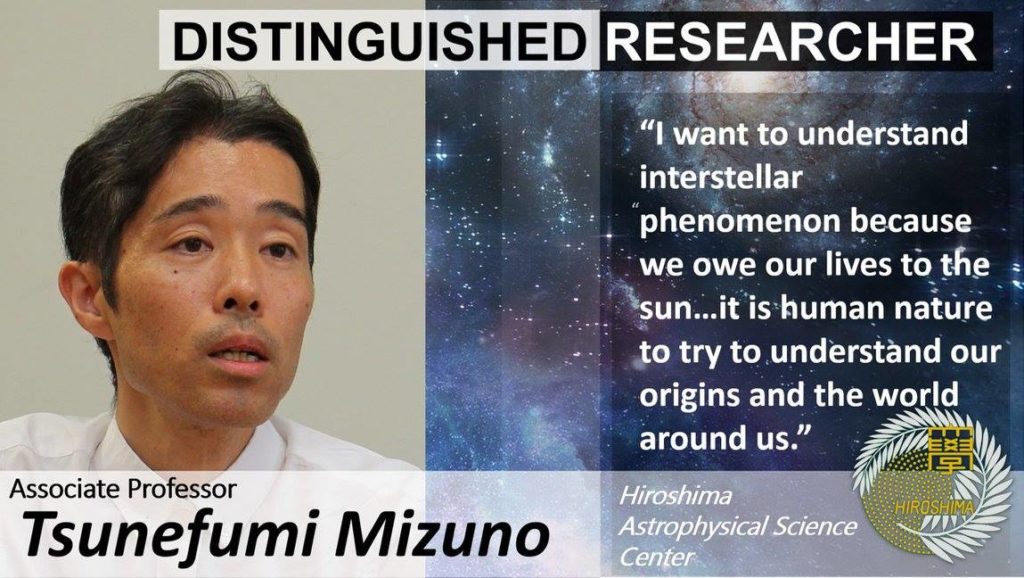
What is your name and specialty?
My name is Tsunefumi Mizuno. I study high-energy phenomenon in the universe, mainly those in our own Milky Way galaxy. I am particularly interested in galactic cosmic rays – their origin and propagation.
What are cosmic rays?
Galactic cosmic rays are high-energy charged particles – protons, electrons and others that are so energetic they travel close to the speed of light. They are generated somewhere in the universe, somewhere in the Milky Way galaxy, likely by stars which have collapsed such as neutron stars and black holes, or from the explosion of massive stars.
They travel through space between stars and, a small fraction of them reach the earth.Since cosmic rays are charged particles, they do not travel in a straight line. Their path is altered by the magnetic fields they travel through and by their interaction with interstellar matter.
Therefore, in order to understand cosmic rays and build a complete picture, we need to know how and where they are produced, and also the other interstellar matter, radiation, and magnetic fields they interact with on their journey. We can study cosmic rays by measuring the high-energy photons called X-rays and gamma rays they emit, using satellites and high-altitude balloons.
Why do we need to care about these rays passing through space?
Maybe we don't need to care, but we live on the earth – and the earth is in the solar system. The sun is one of the shining stars in the Milky Way and each star was born from interstellar gas, that was in turn produced by stars in the past. Cosmic rays were produced by some of those stars and affect the interstellar gas, etcetera – so, everything is closely related.
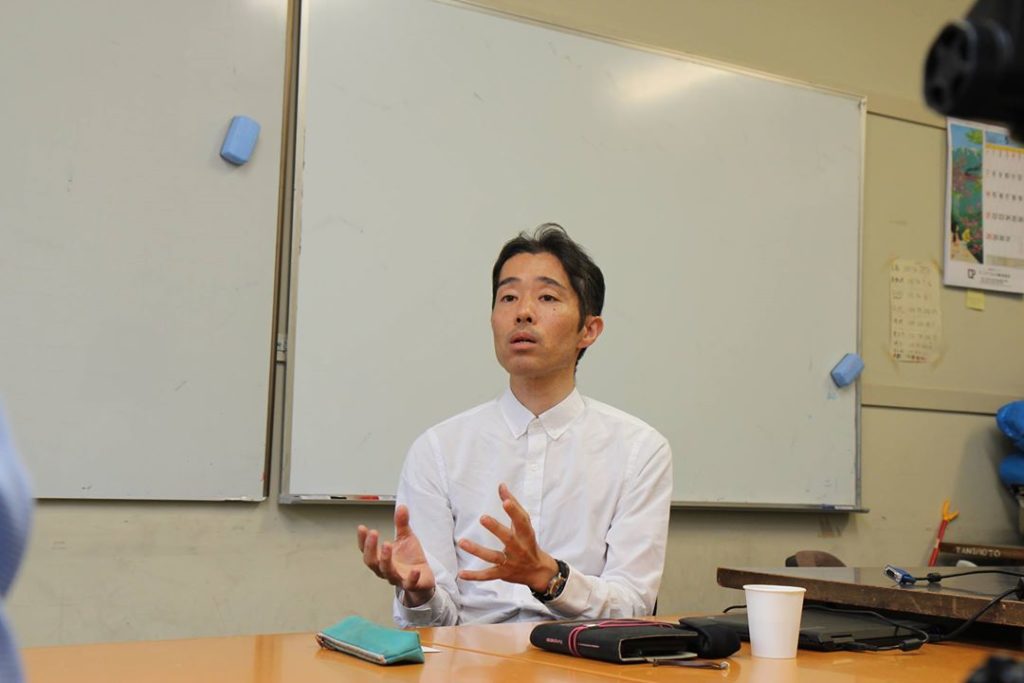
I want to understand interstellar phenomenon because we owe our lives to the sun which was born from interstellar gas think in the past. I think it is human nature to try to understand our origins and the world around us.
So if we owe our life to the sun how much longer do we have here?
Ha, our solar system is 5 billion years old and we think it has a life span of around 10 billion years, so I don't think we need to worry about that.
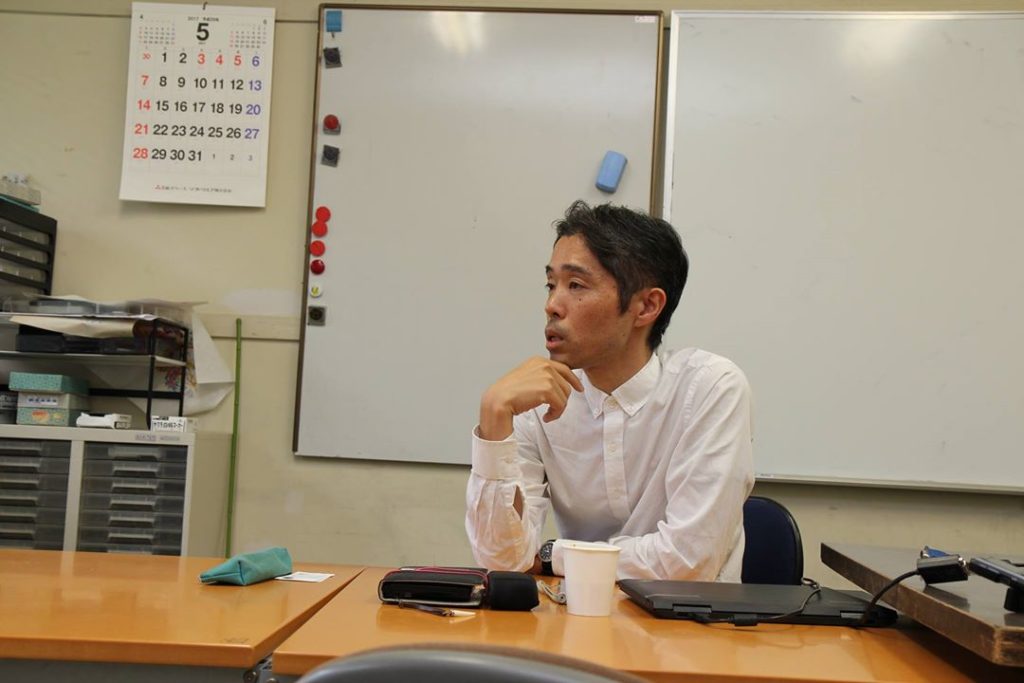
Do black holes affect cosmic rays?
Some of these cosmic rays originate from black holes that have very energetic flows of materials. Other phenomenon involved includes supernovae – the explosion that occurs when a star dies is so powerful that these charged cosmic rays are generated – that explosion is then propagated out into space. Black holes are produced by a fraction of supernovae, therefore black holes are closely related to cosmic rays.
Can you tell me about your background?
I started researching astrophysics in 1995 at the University of Tokyo. I joined the X-ray astrophysics group there and joined the ASCA team (ASCA was a Japanese satellite used to observe X-ray sources in space).
I enjoyed my research. Not only the data analysis, but also research-related activities. Every year we went to the space center at Kagoshima prefecture to operate the satellite. We prepared the commands and sent them to the satellite, downloaded data from it, and checked the data to ensure everything was running smoothly up there.Kagoshima is a great place to work, not least because that area is famous for its cuisine!
What about your childhood? Were you interested in space?
When I was an elementary school student, my father gave me illustrated reference books on science that fascinated me. One of them was about the universe and I loved looking at pictures of the beautiful stars, nebula, and galaxies etcetera.
Also, when I was a child I was very interested in arithmetic and I compared the size of stars, their mass, temperature etcetera so I got to develop an understanding of them, not just visually but their properties as well. I mean it was all just for fun, but I am still here continuing that work – and it is still fun!
Of all things you have worked on what most proud of?
Probably a balloon experiment for the Fermi satellite. Fermi was a new, international gamma ray mission led by NASA. When I joined the project in 2000, the Japanese group was small but some students from HU assisted me. We developed prototypes of the instruments to prove the concept of design. We loaded them on a balloon and they worked well, successfully collecting data in a high radiation environment.
I think our participation enhanced the visibility of the Japanese group in the Fermi collaboration and now Japan is recognized as one of the big countries working on the project. Our contribution enabled other young Japanese scientists to take part in the research.
What is the best thing about working at Hiroshima?
Personally, Hiroshima Carps! I enjoy watching the baseball games on TV and at the stadium. My family enjoy visiting many scenic places nearby – the Peace Memorial Park, Miyajima Island and Hiroshima Botanical Garden etcetera. I have two small daughters and my wife and I bring them there to play. I have no complaints about my life here.
We seem to be on the verge of a new space race.Is Japan, and Hiroshima University ready for the challenge?
In the field of astrophysics, HU is drawing attention these days as we achieved success with large satellites recently such as Fermi and Suzaku (an X-ray astronomy satellite developed jointly by USA and Japan). There, we are certainly ready for the challenge.
On the other hand, future missions will be even bigger so we have to increase international collaboration. On one side, this is very exciting, but it also adds several layers of complexity due to time differences and a lack of face-to-face communication. The timespan of each mission is also increasing. Back when I started my research it took about five-years from initial satellite concept to launch, but now it is more like ten-years. So unfortunately, it is not a great time for young students in this field as they can't experience the whole process, but instead get to carry out some part of a bigger project.
I have been worrying about this from time to time, as have my colleagues – we seem not to have found a solution yet. This is a difficult situation, but we need to manage it, to find a good way.
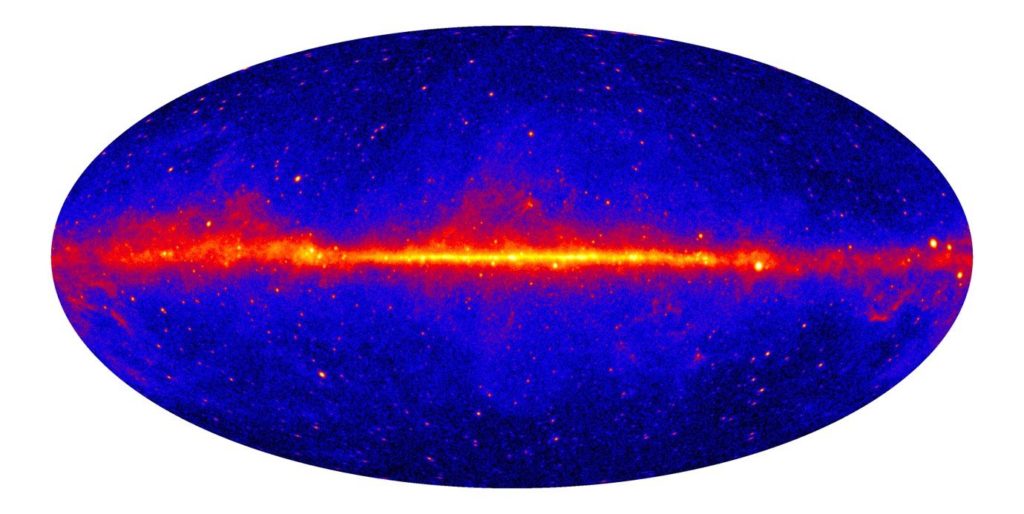
What advice do you have for your students?
After that, you should discuss with your friends, supervisors, etcetera. Discussion with people around you is also important. If after all that you have any questions please feel free to come to my office. Do not hesitate to ask for advice.
You have lived abroad, in America.Do you recommend others do so?
Yes, I lived in California from 2001–2005 working as a postdoc research fellow on the Fermi satellite project. I really would recommend it to others, in particular young people. You can find a different way of living, culture, and perspective in other countries that is very different from living in Japan. Even everyday things life public transportation and food are completely different; but at the extreme end, I found that while in Japan parents take care of their kids, teachers take care of students, and government takes care of citizens – in US you have to take care of yourself.
Where do you see yourself in future?
That is a good question, and difficult to answer. I have been asking myself this my whole life and I always find myself in a different place from what I expected several years before, partly because I develop as a person and scientist, and partly because the environment I am in has changed. As I mentioned, the space missions are now getting bigger and the time to develop each mission is increasing so the future is not so clear.
Putting those difficulties aside, as I mentioned at the beginning, my research interest is in cosmic rays and interstellar phenomena in the Milky Way. I would like to build up a comprehensive picture of our understanding using X-ray and gamma ray data as well as other wavebands. This is not easy.I do not know how long it will take – but it is worth the challenge.
If you could walk out of here tomorrow and do anything what would it be?
Well, I am a bit skeptical about modern society. Our daily life imposes a burden on the environment. If I were to start my career over again, I would like to participate heavily in the development of a sustainable society. I think we should all do what we can to help achieve this.
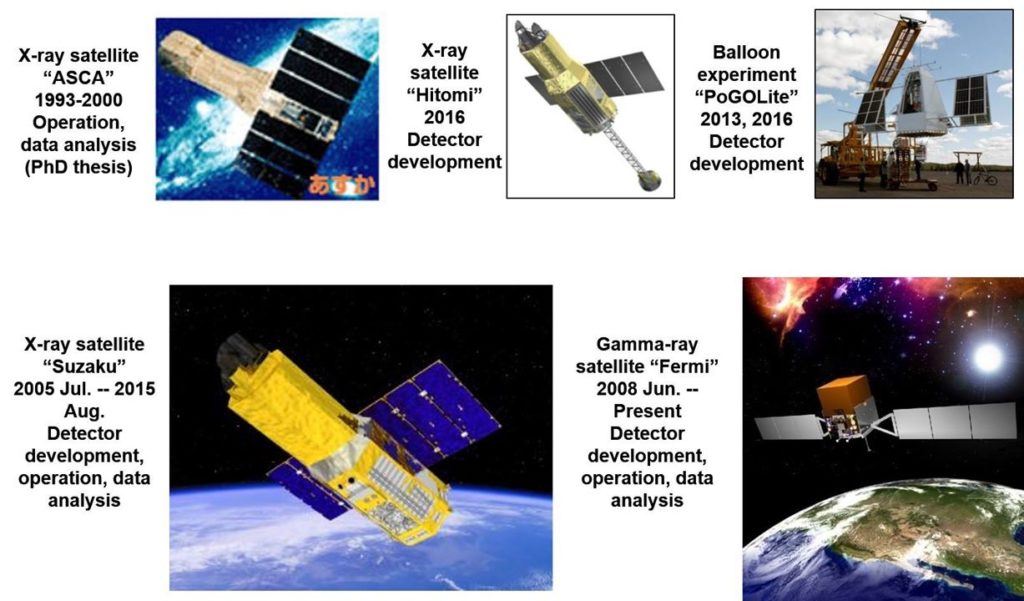
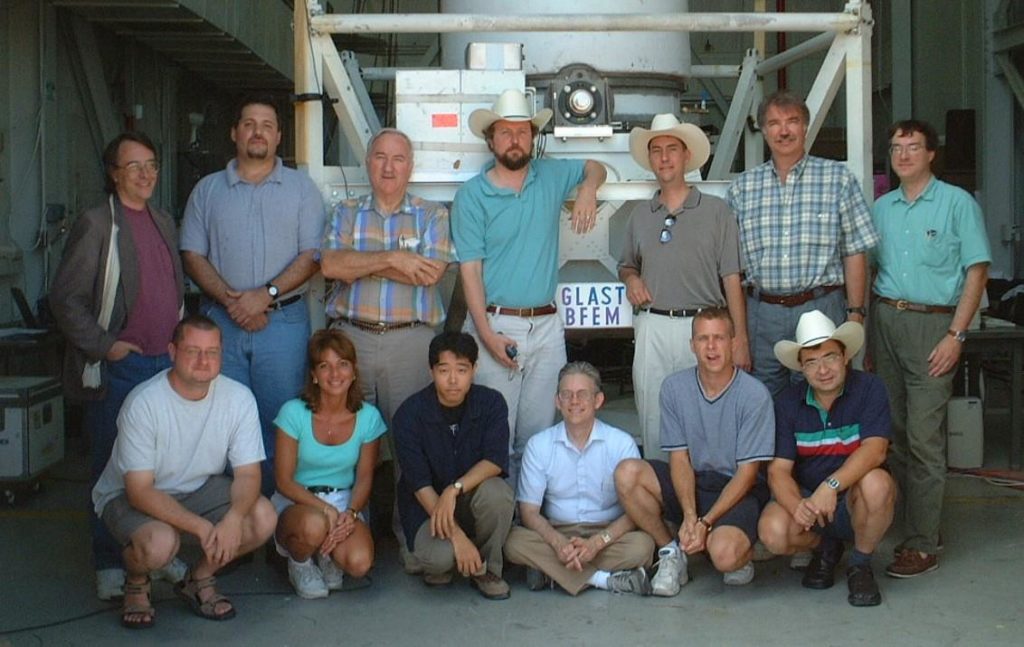
Read more articles on Distinguished Professors / Researchers here
Written by Richard J. O'Connor (Hiroshima University Science Communication Fellow)
Find out more about Associate Professor Mizuno, and how to contact him, here: http://seeds.office.hiroshima-u.ac.jp/profile/en.ec8e42ef5abd5ba1520e17560c007669.html

 Home
Home